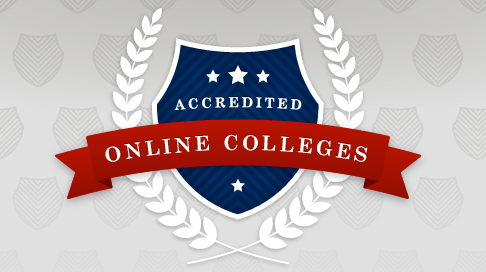The Earning Potential of a College Degree - Rachel Higgins

The question of sustained employability is one that continues to face Americans both young and old. Years ago, a college education was seen as a way out of this problem, but even a top-notch degree is no insurance against the waning job market as today's article illustrates. Writer Rachel Higgins takes a by-the-numbers approach to post-graduation job success, painting a rather dire picture for modern students and their families. Higgins, an online education expert, has composed a large reference of accredited universities on the Internet that readers interested in alternative college options might find useful.
Grads From Traditional and Online Colleges Struggle to Find a Profitable Place in the World
Over the last three decades, the cost of achieving a college degree has increased dramatically, and in recent years the rise has only become more pronounced. Increased enrollment and largely stagnant government funding have lead many universities to raise tuition to levels that many families are beginning to find prohibitive. However, studies show that a college degree is still an effective investment in one's future earning potential, labor mobility and quality of life, leading millions of students and their families to take on a large debt burden in the hopes of a long-term payoff.
"Soaring tuition and shrinking incomes are making college less and less affordable," says Senator Tom Harkin, Iowa Democrat and chairman of the Senate Health, Education, Labor and Pensions Committee. "For millions of young people rising college costs are putting the American dream on hold, or out of reach." A chart recently published in Bloomberg shows college tuition and fees have surged 1,120% since records began in 1978, four times faster than the increase in the consumer price index. In comparison, medical expenses have climbed 601%, while the price of food has increased 244% over the same period.
Despite widespread belief that government funding for higher education is routinely slashed, a recent report from the State Higher Education Executive Officers illustrated that state and local funding for higher education institutions has actually increased substantially in the past 25 years. In 1986, state and local governments provided $31.3 billion to support higher education institutions, and in 2011, state and local support rose to $87.5 billion. However, over the same time period, enrollment in public institutions has increased dramatically, from 7.2 million students attending public colleges in 1986 to over 11.8 million students today. In the past 5 years alone, enrollment has increased 17%, while state support has stayed the same, leading schools to make up the difference through tuition hikes. From 1986 to 2012, the percentage of university revenue attained through tuition has risen from 25% to approximately 45%.
This increase in the amount of college costs shouldered by students and in many cases their parents have lead to an average US family spending approximately $20,902 for the 2011-2012 school year. To handle the burden, 34% of 18 to 24 year old students in the 2011-2012 school year took out federal loans, up 4% from the prior school year, and 9% from 2008-2009. About 10% even took out private loans, which frequently incur higher annual interest rates and harsh penalties if not paid off in the allotted time. Currently the US holds more than $1 trillion in outstanding student loan debt.
Exacerbating conditions for college students and especially recent college graduates is the stubbornly high unemployment rate. Reports from the Economic Policy Institute have found that in the recent recession, college graduates have earned 8-11% less than graduates in 2001, while the unemployment rate sits at 16% within the 16-24 year-old demographic. "If one is not thinking about where this is headed over the next two or three years, you are just completely missing the warning signs," says Rajeev V. Date, deputy director of the Consumer Financial Protection Bureau, the federal watchdog created after the financial crisis. Date likens student borrowing to the risky mortgages that created the student housing bubble before the economic collapse, asserting that college marketing officers, state lawmakers and naïve families have enabled demand for a college education to remain unsustainably high while the federal government allows remains lax on doling out loans.
Despite carrying more of the higher education burden than ever, a majority of students in a recent survey -- more than 6 in 10 -- reported that they "strongly agree" that taking out loans is a better option than opting out of college. "Economists and many parents say that the only thing worse than graduating with lots of debt is not going to college at all," writes Andrew Martin and Andrew Lehren in The New York Times, "since study after study has shown that graduates earn more over a lifetime. And most college students in the US manage to eventually pay back their student loans."
A recent report from the Pew Research Center found that college graduates earn an average of $650,000 more over their lifetime than peers with a high school diploma. Over a 40-year career, the average worker with a high school diploma was found to make about $770,000, while a bachelor's degree holder could earn approximately $1.4 million. On its website, The College Board attempts to calm the nerves of prospective students' parents by maintaining that "whatever sacrifices you and your child make for college education in the short term are more than repaid in the long term."
A Georgetown study found that those with various engineering degrees frequently delivered earnings as much as 300% more than less technical majors. The disparity in median earnings is less extreme, but still noteworthy. For engineering majors holding a bachelors degree, median earnings are about $75,000, while those in psychology and social work fields with undergraduate education hover around $42,000. While these results probably don't come as a big surprise for most students and workers, some results offer surprising results. Computer and math majors, for instance, thought by many to be among the most secure fields, face an unemployment rate of 8.2%, almost on par with the national average. Education majors, however, face only a 5.4% unemployment rate.
While the burden of college education can be daunting for prospective students and their parents, statistics have shown time and again that in today's competitive global marketplace, they are still better off than if they opt out of higher education. New students preparing to invest in higher education today must realize that while they almost certainly broadening their potential future opportunities, they need to be realistic about how they plan to pay off any loans they take out in order to achieve their goals. By becoming aware of the risks of student loans and the realistic earning potential of one's major, students can still ensure that a college education is an effective investment in a profitable career and fulfilling life.
Rachel Higgins is a freelance researcher and blogger forhttp://www.accreditedonlinecolleges.organd an aspiring speech writer from the Northwest. She is also an avid Food Network watcher and cyclist who is hoping to launch her own startup in 2013. Rachel can be reached atrachelhiggins711@gmail.com.


